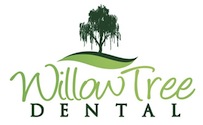

 There are so many toothbrushes on the market. As dentists, this a common question we are asked. And truthfully, we are so happy when this question is asked… because that means our patients care about improving their oral health. There are so many choices available, that the task of choosing an appropriate toothbrush can be somewhat overwhelming.
There are so many toothbrushes on the market. As dentists, this a common question we are asked. And truthfully, we are so happy when this question is asked… because that means our patients care about improving their oral health. There are so many choices available, that the task of choosing an appropriate toothbrush can be somewhat overwhelming.
So, let's break down toothbrushes:
Bristles: Most dentists will agree that a soft-bristled toothbrush is always best to use because combined with toothpaste, it is the least abrasive to teeth. A medium or hard-bristled toothbrush can be abrasive to the teeth and gums.
Size: A toothbrush with a smaller head may be ideal because a smaller toothbrush head can get to those hard to reach places, like around those pesky back teeth.
Manual vs Electric: While both are wonderful, an electric toothbrush is our preference. They usually have timers (2-2.5 minutes) which will tell you how long you should brush (it’s always longer than you think!), the replacement heads are cost-effective and they mostly do the heavy work for you. A manual toothbrush is always great as a backup for home, work, travel or school.
Replacement: Toothbrushes and toothbrush heads should be replaced every three months. They should always be replaced after a cold, the flu and strep throat. When the bristles begin to curve, it’s time for a replacement.
Cleaning: It is important to clean your toothbrush after each use. Rinse thoroughly with water after using to ensure the removal of toothpaste and debris. Allow toothbrush to open air dry in an upright position. Do not routinely cover toothbrush heads (humidity = a petri dish for bacterial growth).
Brand: While we do not endorse any one brand, if you stick to a toothbrush that has the American Dental Association Seal of Approval, you really can’t go wrong.
Sharing: Please do not share your toothbrush with anyone. This puts the sharers of the toothbrush at an increased risk for infections due to the sharing of bodily fluids.
Children and Toothbrushing: Ideally a parent, guardian or caretaker should brush a child’s teeth. First allow the child to brush and then you should brush their teeth afterwards. Remember to use a fluoride free toothpaste until your child can comfortably spit out all the excess toothpaste by his/her self. There are many wonderful apps that make brushing fun for kids. The rule of thumb for when a child can brush by themselves: If they can legibly write their names in a straight line with the letters being the same size, then they have the hand skills to brush on their own. This is typically age 6-8.


